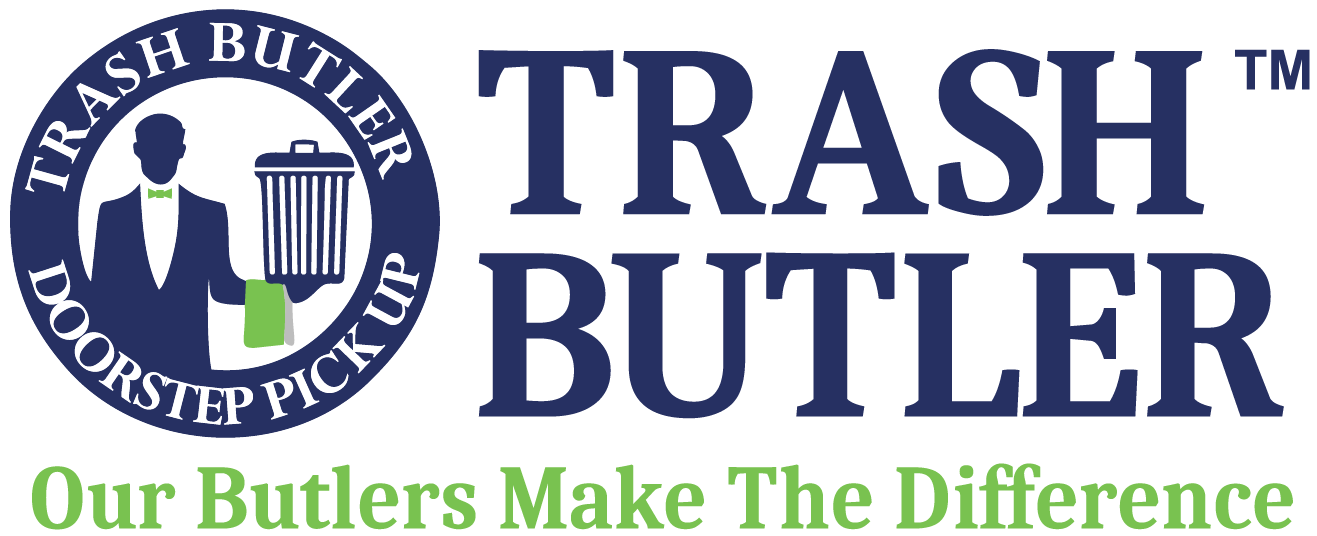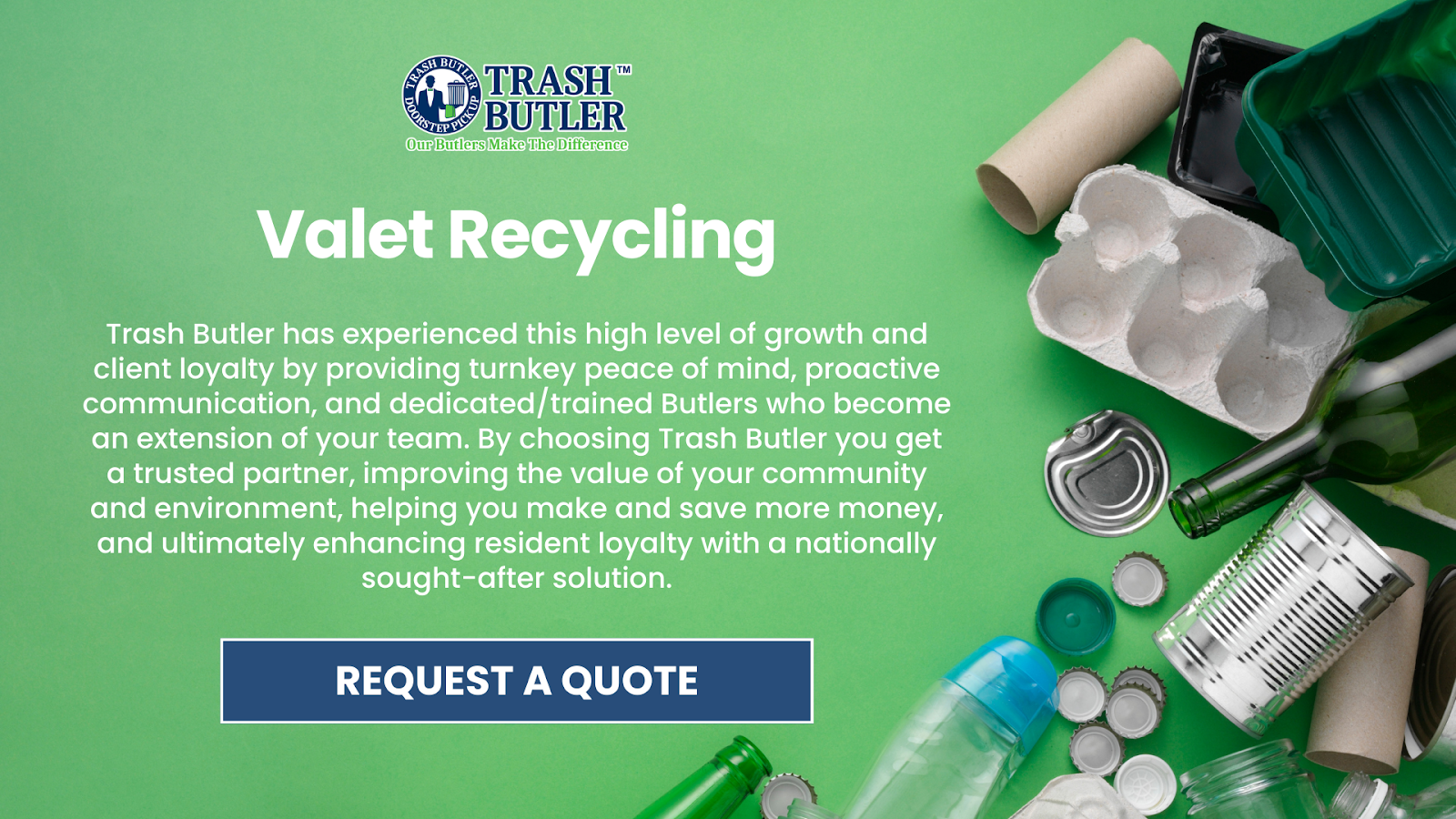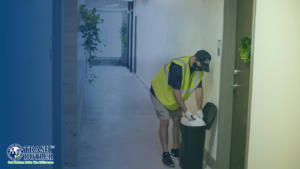Key Takeaways:
- Eco-Friendly Cleaning Reduces Environmental Harm: Traditional methods use harsh chemicals that can pollute water systems and damage trash chute infrastructure. Eco-friendly alternatives minimize these risks.
- Healthier Living Conditions for Tenants: Sustainable cleaning methods improve indoor air quality by reducing VOCs, bacteria, and allergens, leading to a safer environment for residents.
- Long-Term Cost Savings and Efficiency: Regular eco-friendly maintenance extends the lifespan of trash chutes, lowers repair costs, and ensures compliance with health regulations while reducing water waste.
Trash chutes in apartment buildings get a lot of use, but they don’t always get the attention they need. Over time, food waste, spills, and bacteria build up, leading to bad odors, pest problems, and even health risks for residents. Keeping them clean is essential—but how you clean them matters too.
Traditional cleaning methods often use harsh chemicals that can harm the environment. Eco-friendly trash chute cleaning offers a better solution. Using biodegradable cleaners and water-efficient techniques, you can keep your building fresh and sanitary while reducing environmental impact.
In this guide, we’ll discuss why sustainable cleaning is important, how it benefits your property, and the best ways to keep your trash chutes clean without harming the planet.
What Is Eco-Friendly Trash Chute Cleaning And Why Does It Matter?
Eco-friendly trash chute cleaning involves cleaning methods and products that minimize negative environmental impacts. This means avoiding harsh chemicals and prioritizing sustainable practices. It’s crucial to building maintenance, especially in densely populated residential and commercial structures. Here’s a breakdown of why it matters:
Reduced Environmental Impact
- Traditional trash chute cleaning often relies on potent chemical cleaners that can contaminate water systems and harm local ecosystems. Eco-friendly methods prioritize biodegradable cleaning agents and water-efficient techniques, thus lessening the environmental burden.
- Disposing waste from trash chute cleaning can also have an environmental impact. Eco-friendly methods consider the proper disposal of the wastewater and waste materials collected during the cleaning process.
Improved Indoor Air Quality And Health
- Dirty trash chutes are breeding grounds for bacteria, mold, and pests, all contributing to poor indoor air quality. This can lead to respiratory problems and other health issues for building occupants.
- Eco-friendly cleaning minimizes volatile organic compounds (VOCs) and other harmful substances, creating a healthier living and working environment. This is especially important for individuals with sensitivities or allergies.
Enhanced Building Longevity And Maintenance
- The buildup of debris and corrosive substances within trash chutes can lead to structural damage and costly repairs over time.
- Regular, eco-friendly cleaning helps prevent this buildup, extending the lifespan of the chute system and reducing the need for extensive maintenance.
- By preventing buildup, trash chutes operate more efficiently, which can also reduce energy consumption related to waste management.
Common Problems With Traditional Trash Chute Cleaning Methods
Traditional trash chute cleaning methods have been used for years to remove buildup, odors, and bacteria. However, many of these methods have hidden drawbacks that can affect the environment, tenant health, and even the longevity of the trash chute system. Below are some of the most common issues associated with conventional cleaning techniques.
Use Of Harsh Chemicals
Many traditional cleaning methods rely on strong chemical disinfectants that leave behind toxic residues. When washed away, these chemicals can pollute local water systems and may also produce fumes that irritate residents and maintenance staff.
Poor Odor Control
While traditional cleaners temporarily mask odors, they often fail to eliminate bacteria and organic waste buildup fully. As a result, foul smells return quickly, leading to ongoing tenant complaints.
Corrosion And Structural Damage
Some cleaning agents contain acidic or abrasive ingredients that can weaken the trash chute’s interior over time. This leads to rust, corrosion, and potential structural failures, increasing repair and replacement costs.
Excessive Water Waste
Traditional cleaning often involves high-pressure washing with large amounts of water. This method not only wastes water but also increases property managers’ utility costs.
Health Risks For Residents And Staff
Toxic fumes from chemical-based cleaners can linger in hallways and common areas, potentially triggering respiratory issues and allergic reactions among tenants and maintenance workers.
Short-Term Cleaning Results
Traditional cleaning methods often provide surface-level results, meaning waste residue and bacteria quickly build up again. This leads to more frequent cleaning cycles and higher long-term costs.
The Best Eco-Friendly Methods For Cleaning Trash Chutes
Regarding eco-friendly trash chute cleaning, the goal is to achieve effective sanitation while minimizing environmental harm. Here are some of the best eco-friendly methods:
Enzyme-Based Cleaners:
- These cleaners utilize naturally occurring enzymes to break down organic waste, including food residue and other debris.
- Enzyme cleaners are biodegradable and non-toxic, making them a safe and sustainable alternative to harsh chemicals.
- They are effective in eliminating odors and preventing the buildup of harmful bacteria.
High-Pressure Hot Water Cleaning:
- Using high-pressure hot water can effectively dislodge and remove debris without the need for excessive chemical use.
- The heat from the water helps to sanitize the chute, killing bacteria and mold.
- When used efficiently, this method can minimize water consumption.
Biodegradable Cleaning Solutions:
- If cleaning solutions are necessary, prioritize those that are biodegradable and free from harmful chemicals like phosphates and chlorine.
- Look for products that are certified eco-friendly by reputable organizations.
- These solutions break down naturally, reducing the impact on water systems and the environment.
Preventative Maintenance:
- Regular, scheduled cleanings can prevent the buildup of heavy debris, reducing the need for intensive cleaning methods.
- Implementing waste management practices that encourage residents or building occupants to properly bag and dispose of trash can also help.
- Implementing automatic misting systems that use enzyme-based cleaners can help maintain the chutes between deep cleanings.
Proper Waste Water Disposal:
- It is extremely important to ensure that any wastewater produced during the cleaning process is disposed of in a manner that adheres to local regulations.
- This may include filtering the wastewater before it enters the sewage system to remove solid debris.
How Often Should You Schedule An Eco-Friendly Trash Chute Cleaning?
Regular eco-friendly trash chute cleaning is essential for maintaining hygiene, reducing odors, and preventing pest infestations in multifamily apartments. The frequency of cleaning depends on building size, tenant usage, and waste disposal habits. A consistent cleaning schedule ensures long-term sanitation without relying on harsh chemicals.
High-Traffic Apartment Buildings (100+ Units) – Monthly Cleaning
Larger buildings with frequent trash disposal require monthly eco-friendly cleaning to prevent waste buildup, bacteria growth, and persistent odors. Heavy usage increases the risk of pest infestations and tenant complaints if cleaning is neglected.
Medium-Sized Properties (50-100 Units) – Every 2 To 3 Months
For buildings with moderate waste disposal, cleaning every two to three months helps maintain cleanliness without unnecessary water or resource usage. This frequency balances cost-effectiveness with proper sanitation.
Small Apartment Complexes (Less Than 50 Units) – Every 4 To 6 Months
Smaller properties generate less trash, allowing for a cleaning schedule of every four to six months. However, seasonal variations and tenant turnover may require more frequent cleanings.
Properties With Food Businesses Or High Organic Waste – More Frequent Cleaning
If a building has restaurants, grocery stores, or high amounts of food waste, bi-monthly or even monthly cleanings may be necessary to control grease, odors, and pests.
Signs That Your Trash Chutes Need Immediate Cleaning
Neglecting regular trash chute cleaning can lead to serious sanitation issues, tenant complaints, and costly repairs. If you notice any of the following warning signs, it’s time to schedule an immediate eco-friendly cleaning to maintain hygiene and prevent long-term damage.
Persistent Foul Odors
If tenants regularly report unpleasant smells in hallways or common areas, it’s a sign that waste and bacteria are accumulating inside the chutes.
Increased Pest Activity
Cockroaches, rodents, and flies thrive in dirty trash chutes. If pest sightings increase, cleaning should be scheduled immediately.
Visible Waste Residue Or Blockages
Trash chute walls can collect grease, food particles, and liquids, leading to blockages and bacterial growth. Regular inspections help prevent these issues.
Tenant Complaints About Air Quality
If residents experience musty or sour smells near trash rooms, the chute may spread bacteria and airborne contaminants throughout the building.
Wet Or Leaking Trash Rooms
Trash chutes that are improperly cleaned may allow liquids from disposed waste to leak into trash rooms. This creates an ideal environment for mold, bacteria, and strong odors, making the area unsanitary for residents and maintenance staff.
Health Code Violations Or Compliance Warnings
Buildings are required to follow health and safety regulations regarding waste disposal and sanitation. Property managers may face fines or mandatory corrective actions if an inspection reveals that the trash chute system is unsanitary.
Professional vs. DIY Eco-Friendly Trash Chute Cleaning: What’s Right For You?
When it comes to maintaining cleanliness and sustainability in your apartment community, you can provide professional services or take a DIY approach to eco-friendly trash chute cleaning. Both methods have their benefits, and understanding them will help you make an informed choice.
Professional Services
Engaging a professional service such as Trash Butler™ comes with many advantages. Primarily, it allows for a thorough and systematic cleaning process performed by experienced personnel. Trash Butler™ uses advanced techniques and eco-friendly cleaning agents that minimize environmental impact while ensuring efficient waste management.
Moreover, professional services like Trash Butler™ offer a comprehensive, end-to-end solution that includes cleaning and maintenance checks, ensuring that the systems are always running at optimal capacity. This translates into peace of mind and more time for property managers to focus on other priorities.
DIY Approach
On the other hand, a DIY approach could be suitable for property managers looking to involve residents and encourage communal responsibility. This method may involve using environmentally friendly cleaning solutions and organizing group cleaning events among residents.
Although this approach may foster a sense of community and reduce costs, it often lacks the depth and consistency of a professional service. Additionally, without the expertise and equipment that professionals bring, there is a risk of incomplete cleaning, which may lead to hygiene issues over time.
Ultimately, choosing between professional services and a DIY approach depends on your community’s specific needs and available resources. Whether you choose the comprehensive, reliable services of Trash Butler™ or opt for a DIY approach, prioritizing eco-friendly practices will positively contribute to the well-being of your community and the environment.
Choosing The Right Eco-Friendly Trash Chute Cleaning Service Provider
Selecting an eco-friendly trash chute cleaning service is crucial for ensuring the sustainability and cleanliness of your multi-family apartment community. Trash Butler™, a leader in sustainable waste management solutions, provides a comprehensive approach to eco-friendly trash chute cleaning. When choosing a service provider, consider the following factors to ensure they align with your sustainability goals:
- Commitment to Sustainability: Ensure the provider is strongly dedicated to eco-friendly practices. Trash Butler™, for instance, emphasizes recycling and composting, which are critical components of a sustainable environment.
- Comprehensive Offerings: Look for providers offering a wide range of services, including power washing, pet waste management, and bulk item removal, which are designed to maintain pristine property conditions.
- Experience and Reputation: Opt for a provider with a proven track record. Trash Butler™ is recognized as one of America’s fastest-growing companies and serves over 300,000 units nationwide, exemplifying reliability and expertise in waste management.
- Customizable Services: Choose a company that offers customized solutions tailored to your property’s specific needs, maximizing environmental responsibility and resident satisfaction.
By evaluating these criteria, property managers can partner with a service provider like Trash Butler™ that complements their sustainability efforts and enhances residents’ overall living experience.
Final Thoughts
Eco-friendly trash chute cleaning is more than just a maintenance task—it’s crucial to creating a healthier, more sustainable living environment. Property managers can significantly reduce environmental impact while keeping buildings sanitary by choosing biodegradable cleaners, water-efficient techniques, and preventative maintenance. Whether opting for professional services like Trash Butler™ or a DIY approach, prioritizing sustainability benefits tenants and the planet.
Request a Quote: Fill out a form to see how Trash Butler™ can benefit your community.
Read also:
- Eco-Friendly Solutions For Cleaning Trash Chutes And Compactors
- Why Trash Chutes Need More Frequent Cleaning In High-Density Communities
- How Regular Trash Chute Cleaning Reduces Pest Problems In Apartment Complexes
Frequently Asked Questions About Eco-Friendly Trash Chute Cleaning: A Sustainable Approach
What are the environmental benefits of sustainable trash chute cleaning?
Sustainable trash chute cleaning minimizes the use of harmful chemicals that can leach into water systems and soil. This eco-friendly approach reduces the carbon footprint and promotes cleaner air and water quality, contributing significantly to the environment’s overall health.
Can eco-friendly cleaning be as effective as chemical-based cleaning?
Yes, eco-friendly cleaning can be just as effective as traditional methods, if not more so. By utilizing biodegradable solutions and innovative cleaning techniques, eco-friendly services effectively remove grime, prevent odors, and maintain the sanitation of trash chutes without harming the environment.
How can I tell if a trash chute cleaning service is truly eco-friendly?
To determine if a service is genuinely eco-friendly, check for their use of non-toxic, biodegradable cleaning agents and energy-efficient equipment. Additionally, their commitment to reducing water usage and waste should be clear. Certifications and customer reviews can also provide insight into the company’s green practices.
Is eco-friendly trash chute cleaning more expensive than traditional methods?
While eco-friendly cleaning may sometimes have a slightly higher initial cost due to specialized products and equipment, the long-term savings on water, energy and reduced environmental impact often make it more cost-effective. Plus, the added benefit of enhancing property sustainability can be invaluable.
How does green cleaning contribute to building sustainability?
Green cleaning supports building sustainability by extending the life of trash chutes, ensuring proper sanitation, and promoting a healthier living environment for residents. Aligning with green certification standards helps buildings qualify for LEED credits or other sustainably-focused recognitions, thus enhancing property value.
Can eco-friendly cleaning prevent pest infestations in trash chutes?
Yes, maintaining clean and odor-free trash chutes with eco-friendly solutions can help deter pests such as rodents and insects. Regular cleaning prevents the buildup of residues that attract pests, leading to fewer infestations and supporting a cleaner and healthier building environment.







